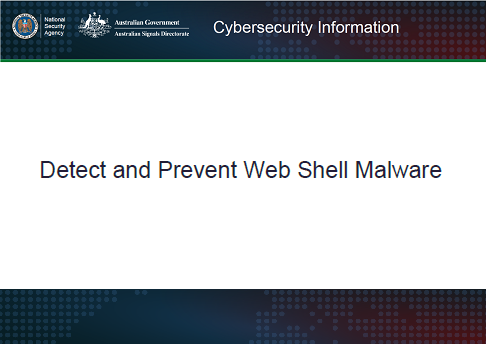Cyber actors have increased the use of web shell malware for computer network exploitation. Web shell malware is software deployed by a hacker, usually on a victim’s web server. It can be used to execute arbitrary system commands, which are commonly sent over HTTP or HTTPS. Web shell attacks pose a serious risk to DoD components. Attackers often create web shells by adding or modifying a file in an existing web application. Web shells provide attackers with persistent access to a compromised network using communication channels disguised to blend in with legitimate traffic. Web shell malware is a long-standing, pervasive threat that continues to evade many security tools.
Cyber actors deploy web shells by exploiting web application vulnerabilities or uploading to otherwise compromised systems. Web shells can serve as persistent backdoors or as relay nodes to route attacker commands to other systems. Attackers frequently chain together web shells on multiple compromised systems to route traffic across networks, such as from internet-facing systems to internal networks.
It is a common misperception that only internet-facing systems are targeted for web shells. Attackers frequently deploy web shells on non-internet facing web servers, such as internal content management systems or network device management interfaces. Internal web applications are often more susceptible to compromise due to lagging patch management or permissive security requirements.
Though the term “web shells” is predominantly associated with malware, it can also refer to web-based system management tools used legitimately by administrators. While not the focus of this guidance, these benign web shells may pose a danger to organizations as weaknesses in these tools can result in system compromise. Administrators should use system management software leveraging enterprise authentication methods, secure communication channels, and security hardening.

